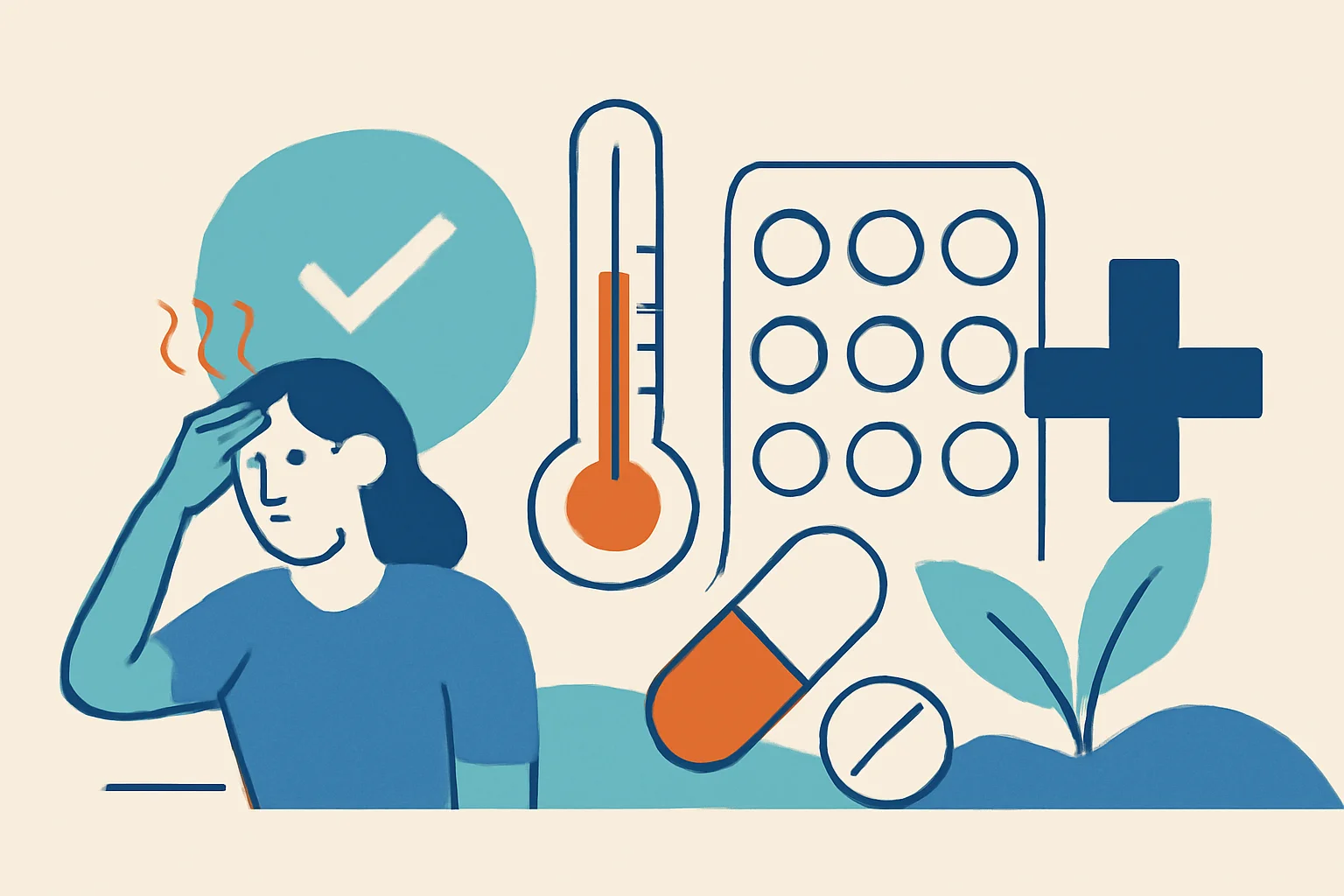
Effective Pain Relief for Fever: Tips and Advice
The issue of fever and pain relief is familiar to many, as almost everyone has experienced these symptoms in some form during their daily lives. Fever, as the body’s natural defense response, generally indicates that the body is fighting some kind of infection, while pain relief is often necessary to continue our daily activities, even when the pain is a consequence of some illness.
Fever and pain relief are intertwined, as in many cases reducing fever goes hand in hand with alleviating pain. People often seek solutions through home remedies and medications, but it is important to know that reducing fever is not always necessary, and pain relief medications are not warranted in every case of pain. Our body is much more complex than simply treating symptoms with medications.
To gain a thorough understanding of the topic, let’s explore how fever works, why pain relief is important, and when it is advisable to consult a doctor.
Fever: The Body’s Natural Defense Mechanism
Fever refers to an increase in body temperature, which can be the body’s response to various causes, such as infection, inflammation, or even stress. Normal body temperature typically ranges from 36.5 to 37.5 °C, and fever begins when body temperature exceeds 37.5 °C. The onset of fever is a sign of the immune system’s active functioning, which helps combat pathogens.
There are different types of fever: it can be acute, which starts suddenly and lasts for a relatively short period, or chronic, which can persist for months or even years. Acute fever often results from infections, such as influenza or the common cold, while chronic fever may indicate autoimmune diseases or other chronic conditions.
It is important to understand that fever itself is not a disease but a symptom that can alert us that something is wrong in our body. Measures aimed at reducing fever, such as the use of antipyretic medications, are not always necessary. In certain cases, fever can help the body fight off infection, as the elevated temperature inhibits the reproduction of pathogens.
When treating fever, it is crucial to monitor accompanying symptoms as well. If fever is accompanied by severe pain, difficulty breathing, rashes, or other concerning symptoms, it is essential to consult a doctor. Fever alone does not always require treatment, but if the temperature remains persistently high, or if the patient’s condition worsens, medical intervention is necessary.
The Role and Methods of Pain Relief
The goal of pain relief is to reduce or eliminate pain, which can arise from various causes, such as injury, illness, or chronic conditions. Pain can be acute, which occurs suddenly and lasts for a short time, or chronic, which persists over a longer period and may indicate more serious health issues.
Pain relief can be achieved through various methods. One of the most common forms is medication-based pain relief, which includes over-the-counter (OTC) medications like ibuprofen or acetaminophen, as well as prescription pain relievers. These medications effectively reduce the sensation of pain, but it is important to take them at the appropriate dosage and be aware of potential side effects.
Medication can also be complemented with alternative methods, such as physical therapy, acupuncture, or relaxation techniques, which can also contribute to pain reduction. Lifestyle changes, such as regular exercise, healthy eating, and stress management techniques, can also help alleviate pain and improve the body’s overall condition.
Pain relief is an important part of health maintenance, as chronic pain can represent not only a physical burden but also a psychological one. Therefore, it is worth paying attention to the causes of pain and seeking medical help if necessary to develop an appropriate treatment plan. Reducing pain can contribute to improving the quality of daily life and allow patients to lead more active lives.
When to Consult a Doctor
Although fever and pain are common symptoms, it is important to know when to seek medical attention. In most cases, fever and pain can be alleviated with home treatment, but certain situations require medical intervention.
If fever rises to 38.5 °C or higher and does not decrease with conventional antipyretic medications, it is advisable to consult a doctor. The same applies to persistent fever lasting more than three days, or if other concerning symptoms occur alongside the fever, such as difficulty breathing, severe headache, skin rashes, or abdominal pain.
The same vigilance is necessary for pain. If pain occurs suddenly, especially in the chest, abdomen, or head, and is severe or unbearable, immediate medical help is required. Additionally, if the pain intensifies over time, or if it is accompanied by symptoms such as fever, vomiting, or dizziness, it is also important to consult a doctor.
In the case of chronic pain that persists for months, medical evaluation is also necessary to determine the cause of the pain and the appropriate treatment. Alongside measures aimed at reducing pain, it is crucial to address the underlying causes to find a lasting solution.
Therefore, regarding fever and pain, it is always worth paying attention to our body’s signals and seeking professional help when necessary.
**Warning:** This article does not constitute medical advice. In case of health issues, everyone should follow their doctor’s advice.

